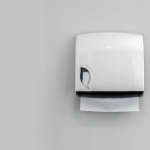Everything You Need To Know About The Health Risks Of Dermal Fillers
Warning: Undefined variable $post in /home/dietofli/public_html/wp-content/plugins/code-snippets/php/snippet-ops.php(584) : eval()'d code on line 3
Warning: Attempt to read property "ID" on null in /home/dietofli/public_html/wp-content/plugins/code-snippets/php/snippet-ops.php(584) : eval()'d code on line 3
The estimated reading time is 12 minutes
Warning: Undefined variable $post in /home/dietofli/public_html/wp-content/plugins/oxygen/component-framework/components/classes/code-block.class.php(115) : eval()'d code on line 3
Warning: Attempt to read property "ID" on null in /home/dietofli/public_html/wp-content/plugins/oxygen/component-framework/components/classes/code-block.class.php(115) : eval()'d code on line 3
Over the years, more and more people have decided to take their appearance into their own hands. There is absolutely no doubt that aging is unwelcomed. Nevertheless, everyone is going to be forced to deal with aging at some point or another. It is impossible to dial back your age. However, there are some things that you can do to slow the aging process. You may also be able to decrease the visibility of aging to some degree. Dermal fillers may very well be the solution that you’re looking for. Are dermal fillers safe? What are the risks? Within this guide, you will learn more about dermal fillers and the risks involved. (1)
Are They Safe?
First and foremost, you should learn about the safeness of dermal fillers. Are these products actually safe? The truth of the matter is that they are. As long as the patient sticks with the clinically approved uses of dermal fillers, they’ll reap the benefits, while minimizing the risks. You also need to understand that the Food and Drug Administration has not approved dermal fillers for some uses. It is in your best interest to only use dermal fillers for the purposes that have been approved by the FDA. Also, make sure that injections are performed by a licensed medical professional.
As long as you take these steps, you’ll be able to improve the appearance of your face and keep the risks to the minimum.
Approved Uses Of Dermal Fillers
To protect your health, you need to make sure that you’re only using dermal fillers for approved uses. The FDA has taken steps to confirm the safeness of dermal fillers. Some uses have been approved by the agency, while others have not. Below, you’ll learn a great deal more about the FDA approved uses of dermal fillers.
- Dermal fillers made using temporary or absorbable materials have been approved for the correction of skin folds and facial wrinkles. They’re best for treating moderate to severe imperfections.
- A permanent dermal filler has been used for the rectification of acnes scars on the cheek and nasolabial folds. Remember that it is only approved for patients over the age of 21 year.
- A handful of absorbable fillers have been approved for lip and cheek augmentation. They’re also approved for the improvement of contour deficiencies.
- Fillers have also been approved for hand augmentation. These fillers are capable of increasing the volume on the back of the patient’s hands.
It is vital to understand that patients will often need to acquire more than one injection to get the results that they’re after. Speak with your doctor to determine what is going to work best for you. (2)
Non-Approved Uses
Dermal fillers are sometimes used for other purposes. Just remember that these uses have not been approved by the FDA. Therefore, they might be safe and they’re definitely not recommended. Fillers should not be used to increase the size of the breast or buttocks. They should not be used to increase the fullness of the patient’s feet. Dermal fillers should never be implanted into tendons, bones, ligaments or muscles. Using dermal fillers for unapproved purposes can be downright dangerous. It is best to stick with the approved uses!
What Are Dermal Fillers?
There is nothing more rewarding for a cosmetic patient that receiving an immediate correction, while experiencing very little downtime. This is exactly where dermal fillers can come in handy. Fillers are oftentimes referred to aswrinkle fillers, soft tissue fillers, or injectable implants. They are medical device implants that have been approved by the drug and food administration. While their main purpose is to help individuals create a smooth, fuller appearance in the face, the can be utilized for a variety of tasks. Some of the most common areas where they are injected are in the nasolabial folds, cheeks, lips, and even in the backs of the hands.
Dermal fillers are comprised of a variety of different substances. It is imperative to understand each substance and exactly they are used for.
Calcium Hydroxylapatite – Calcium Hydroxylapatite is a mineral that is commonly found in the human bone.
Hyaluronic Acid – Hyaluronic Acid can be found in a variety of fluids and tissues throughout the body. And, this is the compound that actually adds the plumpness to the skin.
Polyalkylimide – This is a transparent gel and this is the very substance that makes the entire compound compatible with the body.
Polylactic Acid – Polylactic Acid is an extremely useful compound, as it stimulates the skin and actually causes it to produce more collagen.
Keep in mind that each of these substances can be used alone or combine together to treat a variety of conditions.
How Do These Fillers Work?
Now, that you know what dermal fillers are, you are probably wondering exactly how they work. This naturally derived material is directly injected into the skin with the sole purpose of plumping that area. Whether it is injected in a wrinkle, depression, or fold, the filler will be injected until the impression is no longer there. You could almost think of the process as someone putting air in a flat tire. Once the air is entered into the air it fills the tire until it is round, plump, and like new again. Unfortunately, just like a leaking tire the effects of fillers will eventually wear out. The effects and the time length of the injection can vary depending on the individual and the type of filler that was applied.
Sometimes the location of the injection site can make a major different as well.
Allergic Reactions
Just because your friend or sister underwent a cosmetic procedure utilizing wrinkle fillers without experiencing any problems, does not necessary mean that you will have the same experience. Everyone who undergoes wrinkle fillers is at risk of allergic reactions, even if it is the second or tenth time.
An allergic reaction associated with wrinkle fillers could involve hives and irritation. When someone’s immune system detects what it perceives as invaders, it will immediately get to work eradicating them. While some people’s immune system will respond appropriately to the ingredients in dermal fillers, others will make war on these substances.
The immune system will release antibodies, known as proteins that transmit a message to mast cells that immediately dispatch histamine, trigging allergy symptoms.
Tyndall Effect
While it is rare, some people can be left with a bluish skin discoloration at and near the injection site. Reports of the Tyndall effect is rare, but always a possibility for patients undergoing dermal filler injections. The color can last up to several months, causing the victim much embarrassment and stress. Thankfully, there are medicines that have shown to improve this condition. So, even though you feel like it is the end of the world, there is a solution to this issue.
Which Dermal Fillers Have Higher Risks Of Side Effects?
Many people will opt for wrinkle fillers that offer short-term results, while others prefer the brands that last longer. Well, it is crucial to note that the dermal fillers that last longer are more apt to cause side effects. To lower the risks, it is crucial to work with your dermatologist to determine which dermal filler is best for you.
Dermal Filler Side Effects
While side effects are rare, they are still a possibility. Dermal fillers with an ingredient known as hyaluronic acid have been known to cause side effects, which include bruising, redness and swelling at the injection site. The filler may also appear as tiny bumps underneath the skin. However, this is most only a temporary side effect that will diminish after several days or weeks.
Synthetic wrinkle fillers have similar side effects as hyaluronic acid dermal fillers. The bumps or nodules underneath the skin are also a possibility. In most cases, these bumps will diminish without further treatment, but there is always the possibility of them becoming a permanent fixture. In this case, your dermatologist will recommend surgery to have them removed.
Know The Difference Between Dermal Fillers And Botox
There are a lot of misconceptions surrounding Botox and dermal fillers. The first and most wide known misconception is that both of these substances are the same. This is not the case at all. While both are extremely popular forms of cosmetic correction surgery, they are completely different. Botox actually contain a purified bacterium that freezes the muscles. When the muscles are frozen in the face is reduced the appearance of lines and wrinkles that are produced through certain facial expressions.
Dermal fillers on the other hand are much different. They are designed to actually add fullness to the area that have become thinned or dimpled due to the aging process. Most of the time this thinning usually takes place in the cheek, lip, and mouth area. Botox is usually injected into the forehead.
Complications That May Arise
While dermal fillers come with very little side effects and risks, there is still a chance that something can go wrong during. Unfortunately, with ever procedure there are risks and chances for things to go wrong and dermal fillers are no different. There are a number of complications that can arise when you are undergoing treatment. For one, if the injections are performed by an inexperienced of under qualified individual it can cause you to lose your facial balance. One side of your lips might be plumper than the other side.
There is also a chance that the professional might use the wrong type of injectable. If this happens it could result in long-term facial damage. If the wrong type of filler is used in the wrong part of the body it can also result in negative consequences. This will usually make you look older or worse than you did before you underwent the procedure. You also have to be careful about the physician injecting the needle too fast, as this can also result in unwanted damage.
The Types Of Dermal Fillers And Their Risks
You need to understand that there are several different types of dermal fillers. The risks involved will vary significantly from one type to the next. All are considered pretty safe for your health. Nevertheless, you’ll definitely want to learn more about the risks, before moving forward. Below, you’ll learn more about the different types of fillers out there.
Blood Based Fillers
Sephyl is a type of dermal fillers that relies on the patient’s own blood. The filler is capable of centrifuging the blood. In return, this collects fibrin and platelets. These will be injected back into the body to encourage the growth of collage. This specific type of dermal filler was first approved by the FDA in October of 2009. It is approved for frown lines, brows, laugh lines, surgery scars, and acne. The effects of blood-based dermal fillers can last as long as 18 months. They’re also very popular, because the risk of allergic reaction is basically eliminated.
Calcium Based Fillers
There are also many calcium-based fillers. Radiesse just happens to be one of the most popular dermal fillers at MayLips.com. These fillers used calcium hydroxylapatite microspheres to add volume to the folds and wrinkles. It can also help encourage the production of collagen. Radiesse is slightly more popular than Juvederm, because the results will stick around longer. It is also better for improving the visibility of the deeper folds found around the mouth. Just remember that the results are not permanent. The health risks are minimal.
Hyaluronic Acid
Most dermal fillers are made using hyaluronic acid. These fillers contain complex sugars, which are natural to the body. They’re capable of retaining water and plumping the skin. Some of the most popular types of hyaluronic acid fillers including Perlane, Prevelle and Restylane. There are a few newer models, including Hydrelle and Juvederm XC. The first treatment is going to last roughly four to six months. Follow up treatments can last as long as a year. Again, these fillers tend to be very safe. However, you should discuss the health risks with your doctor before undergoing treatment.
Permanent Fillers
If you want to get permanent results, you’ll definitely want to stick with permanent fillers. Artefill is one of the most popular FDA approved permanent fillers. This specific filler has been approved for the correction of laugh lines and nasolabial folds. The results are indeed permanent and will not be impacted by the aging process. In the long run, permanent fillers are cheaper. After all, you do not have to worry about getting multiple injections over the course of a year or so. However, they are more expensive upfront. Just remember that the microdroplet technique has not yet been approved by the FDA! Therefore, it might be detrimental to your health.
Poly-L-Lactic Acid
Finally, you should know that there are some fillers made using poly-L-lactic acid. Sculptra tends to be the most common. This filler was approved by the FDA in 2004. It was approved for the treatment of facial wasting for patients with HIV. This synthetic filler was eventually approved for aesthetic purposes in 2009. It tends to be very effective. In fact, Sculptra is one of the only fillers that is capable of restoring youthful volume to the face. The results can stick around for as long as 24 months. Just remember that you’re going to need four injections to get the results that you’re after.
Then, you’ll need follow up injections after all.














